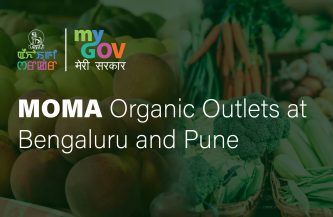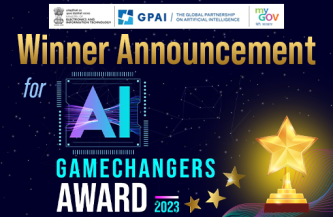Gaon and Garib on the Path of Prosperity: A Vision Coming True

All too often, governments in India have been proactive in rhetoric against poverty rather than taking measures to fight it. The approach to fighting poverty, was largely that of providing temporary sops rather than long-term empowerment of the poor to rise above their circumstances. Though every government that comes aboard pledges to eradicate poverty, tens of crores of people, mostly poor, didn’t even have bank accounts as recently as 2014, even after decades of independence.
Narendra Modi’s Government is not all about programs on paper. There is an overriding goal in revamping numerous anti-poverty programs, spurring states to do more to ensure that people who deserve, actually receive the benefits meant for them.

Poverty, being primarily a financial phenomenon, the most important of all measures to fight it is financial inclusion. Financial inclusion means access to formal financial institutions that help governments reach those who need it the most. It establishes a direct link between the system and the poor. Financial inclusion through provision of bank accounts also helps beneficiaries receive direct transfer of benefits to their own bank accounts without anyone’s intervention.
The ground-breaking Jan Dhan programme was the biggest ever financial inclusion programme. The next step was to roll out social security, which came in the form of Jan Suraksha. Jan Suraksha insured the uninsured through insurance schemes.

In India, 5.77 crore micro manufacturing, trading and service businesses generate most of the jobs. This sector is of crucial importance in both employment and economic development. However, the dearth of formal credit channels forced entrepreneurs to the doors of private moneylenders, who often exploited them. The MUDRA scheme facilitates collateral-free bank financing for small businesses. This has opened the gates of socio-economic empowerment by stimulating economic activity and generating employment, turning job-seekers into job providers.

To empower the nation’s workers, the minimum wages of lakhs of agricultural and non-agricultural workers have been raised and so has the eligibility limit for availing bonuses. Reforms like introducing a Unique Account Number for Employees Provident Fund (EPF) has also greatly eased the lives of workers. The Pradhan Mantri Ujjwala Yojana has provided about 2 crore LPG connections to the poor households all over India, rescuing women from smoky kitchens. This provides a superior standard of living to families through better health and a cleaner environment.

Infrastructure, especially rural, is key in socio-economic empowerment and economic inclusion as it enhances access to markets, resources and employment. Under Pradhan Mantri Gram Sadak Yojana, miles of roads have been added and are continuously being added to the country’s infrastructure.
Another key part of rural infrastructure is access to power. Access to electricity promotes socio-economic mobility. The Prime Minister had given a clarion call to electrify all villages in 1000 days. More than 65% of the target has already been achieved with 13,432 out of 18,456 villages ‘experiencing power’ for the first time since independence.

After Prime Minister Narendra Modi shared his dream to provide a roof to every head by 2022, affordable housing has received a shot in the arm through urban and rural housing schemes. The Government is providing interest subsidy on loans taken under Pradhan Mantri Awas Yojana.
One thing that affects the poor the most is the lack of access to healthcare, not only due to the cost of seeking medical treatment, but also due to the loss of economic opportunities due to inability to work. The Narendra Modi-led government believes the poor are as much entitled to good health and healthcare as anyone else. Mission Indradhanush has been functioning successfully to protect each and every child in the country from contagious diseases. More than 2.6 crore children have been immunized under this initiative. The annual growth for full immunization coverage has increased. Stent prices and cancer drug prices have been reduced providing relief to lakhs of patients and their families. Prices have been capped for select medicines in the National List of Essential Medicines (NLEM) ensuring affordable and accessible medicines for the poor.

Prime Minister Narendra Modi’s government was voted in on a plank of economic development for all. Development automatically means eradication of poverty and upliftment of the living standards of the poor. The government is attacking the poverty problem with a multi-pronged strategy, providing financial and social security, economic opportunities and creating social and physical infrastructure to empower the poor and enable them to break away from the shackles of poverty.






